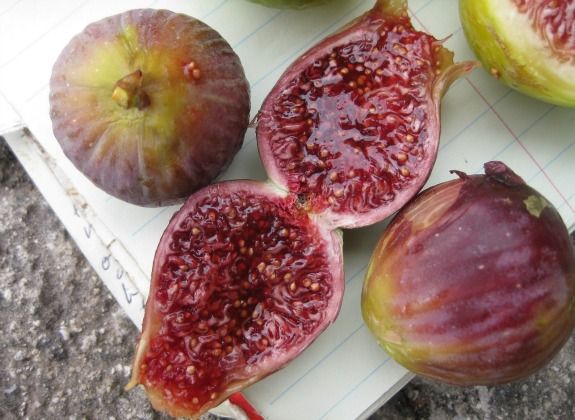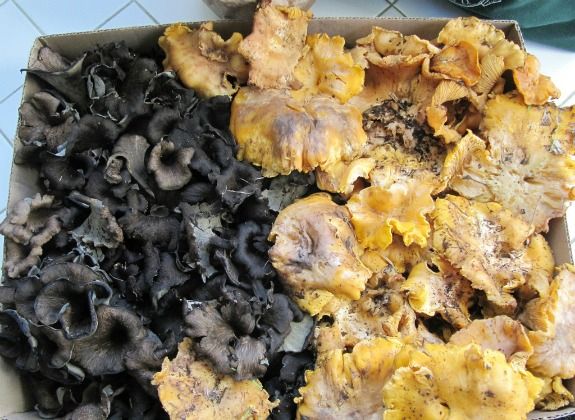Great Food Festivals of the World
To sample the best foods and flavors of a region, head for a festival
/https://tf-cmsv2-smithsonianmag-media.s3.amazonaws.com/filer/foodfestivals-hero-631.jpg)
Where does a traveler go to best taste the foods and flavors of a region? Local restaurants? Not me. Because when a dish arrives at the table in a fine restaurant, it is more often the artful work of a chef, not the pure product of the land, and I don’t know about you, but I travel to experience a place, not its chefs. When I visit the East Coast of America, I want a steamed lobster, plain and simple—not shredded and rendered into a bisque, or folded into a delicate soufflé. And when I visit Southern California, I want to see the avocados, whole and complete, one variety beside the next, not whipped into some unidentifiable frothy salad dressing or blended into ice cream. And when I travel to Turkey, I want to eat Turkish figs, fresh off the branch as the tree offered them—not wrapped in bacon, doused with oil, stuffed with cheese and grilled. And in Alaska, there may be no better summertime dinner than a steak of salmon, grilled over open flames and drizzled with lemon—no fancy kitchen tricks required.
No, it doesn’t take a culinary college graduate to make good food. The land does it for us—and here are a few walk-around festivals this summer and fall, each starring some of the world’s greatest ingredients.
Tomatoes. The 16th Annual Sonoma County Heirloom Tomato Festival arrives on September 14 for a two-day gala at Kendall-Jackson Winery in Fulton, California, where visitors will meet 175 varieties of tomatoes that have almost slipped to the wayside in the shadow of Romas and other dominating commercial varieties. Tasting opportunities will abound for those interested in discerning the subtle and dramatic differences between varieties, while local star chefs will also get their hands on a few tomatoes for a competitive cook-off. In Valencia, Spain, meanwhile, the annual giant tomato fight arrives again on August 29 as thousands of revelers engage in La Tomatina. There is less food at this event than there is tomato smashing, stomping and squashing, plus half-naked wrestling in freshly pulped tomato sauce.
Figs. In Fresno, California, heart of America’s fig-growing industry, the 11th Annual Fig Fest comes this Saturday, August 11, on the front lawn of Fresno State University. The gathering will feature farmers, each at their own stalls and each showcasing the fruits of their mid-summer labors for guests to see and taste—like the Calimyrna, black mission, Kadota, brown Turkey, panache and other varieties of fig grown in local orchards. Wine and fig-based hors d’oeuvres can also be sampled, while a “Fig Feast” later in the evening at the Vineyard Restaurant will present the sweet and squishy fig in a fine-dining context. I’ll sate myself with unadulterated figs on the university lawn, thank you—though I’ll venture to guess (and correct me if I’m wrong) that those who buy the $75 meal ticket will find figs wrapped in salted swine and grilled.

Oysters. Any seafood fan knows that the best oyster is a raw one, slurped down minutes after being shucked from its shell—and oyster lovers at the annual International Oyster & Seafood Festival in Galway, Ireland, held the last three days of September, will find no short supply of their favorite cold and clammy mollusk. Events at the the festival include an oyster- shucking contest (watch that knife!) and Irish dancing. And don’t mark my words, but I would bet that somewhere in that three-day spell you could find yourself a pint of oyster stout. We just missed another oyster fest in June in New Orleans, as well as in Arcata, on the wild, black bear-trodden North Coast of California. Pencil them in for next year.
Wild Salmon. In British Columbia more than anywhere else, perhaps, a sharp line separates farmed salmon from wild. The former is abundant, cheap and likely a direct cause of the decline of some wild salmon populations—and proceeds from the annual Wild Salmon Festival of Lumby, British Columbia, held each July, go toward restoring local salmon-spawning habitat. As the event’s website poignantly states, “This festival honors the Wild Salmon who still come here to spawn and die.”
Mangoes. A festival each July in Coral Gables, Florida, features all things mango in one of the only American states where this tropical rock star of fruits can thrive. Florida farmers grow unique local varieties that festival visitors may taste nowhere else. In Guam, a celebration each June in the village of Agat showcases the island’s summer mango harvest with tastings, music, two- and five-kilometer runs and plant sales.

Watermelons. Festivals for America’s favorite and clumsiest fruit abound each summer. In Hope, Arkansas, watermelons take the stage this weekend at the 36th annual Watermelon Festival. Other similar festivals occur in Fair Bluff, North Carolina, in Carytown, Virginia, and in Mize, Mississippi. Throughout the Old World, too, summertime festivities honor the big juicy fruit, native to Eurasia. Upcoming is the annual watermelon festival in Salamanovo, Bulgaria, while the one in Beijing, China, came and went in late May.
Avocados. The Hass is the king of commercial avocado varieties, but hundreds of others can be found in Central American forests, in smaller orchards in California and Florida, and in government tree collections—like the experimental orchard at U.C. Irvine, where we just missed the annual walk-around-and-taste tour of the 80-variety avocado grove. But yet to come this year and early in 2013 are the avocado festival in Carpinteria, California, from October 5 to 7, next February’s avocado festival on the Big Island of Hawaii, where 200 varieties of avocados grow on local farms, and still another festival next April in Fallbrook, California. At each event there is sure to be mountains of guacamole—and even avocado ice cream.
Maine Lobster. We missed this one by a week—but pencil the Maine Lobster Festival into your 2013 calendar. Here, at Harbor Park in Rockland, the East Coast’s favorite crustacean will be served up in almost every manner. Consider getting to know the lobster first with a whole steamed two-pounder before moving on to more complicated dishes, which will be served by competing chefs in the lobster cook-off.

Mushrooms. They rise unpredictably from the mossy forest floor, in dark, damp places, and in a vast array of colors, shapes and sizes—and the fact that some wild mushrooms are gourmet-grade edibles stirs fascination in millions of human admirers, who wait for them aboveground, frying pans greased to go. And so it’s hardly a surprise that countless fungus festivals celebrate wild mushrooms. In California’s Mendocino County in November, the annual Wine and Mushroom Festival spotlights one of the world’s most productive mushroom hotspots. Visitors will see and taste such culinary stars as the porcini, chanterelle, morel, lobster and black trumpet. Other annual mushroom festivals occur in Madisonville, Texas, Boyne City, Michigan, and Telluride, Colorado. And the world’s favorite underground mushroom, the white truffle, stars at the 82nd Annual International White Truffle Fair, which runs October 6 through November 18 in Alba, Italy.
Zinfandel. The largest single-variety wine tasting in the world, held each January in San Francisco, is a celebration of the Zinfandel grape, but just as much, it is a celebration of California itself, producer of virtually all the Zinfandel wine in the world. This Croatian-native grape variety makes a distinctively sharp and peppery red wine, which may owe its unique qualities in part to the chemistry of California soil. Scientists have found compounds of marine origin in the skins and juice of Zinfandel grapes—delivered, so the theory goes, from ocean to inland valley via migrating Chinook salmon, which die after spawning and whose carcasses were historically hauled from the rivers by bears and eaten in the state’s future vineyards. Taste a Zinfandel today, and you’re tasting California of yesteryear.
Yogurt, garlic, apples, wild game, olives, durians, cheese, jackfruit—foods of almost every sort are celebrated by the people who love them in the lands that produce them. So tell us: Which great or off-the-beaten-path food festivals did we leave out?
Planning Your Next Trip?
Explore great travel deals
Smithsonian magazine participates in affiliate link advertising programs. If you purchase an item through these links, we receive a commission.
/https://tf-cmsv2-smithsonianmag-media.s3.amazonaws.com/accounts/headshot/Off-Road-alastair-bland-240.jpg)
/https://tf-cmsv2-smithsonianmag-media.s3.amazonaws.com/accounts/headshot/Off-Road-alastair-bland-240.jpg)